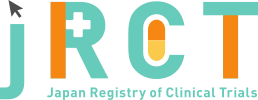臨床研究等提出・公開システム
|
Sept. 13, 2022 |
|
|
April. 08, 2024 |
|
|
jRCT1062220055 |
A study on the effect of early tongue training on oral function for the young older using medical Pekopanda (Early tongue training using medical Pekopanda) (Early tongue training using medical Pekopanda) |
|
Effect of early tongue training on oral function for the young older (Early tongue training using medical Pekopanda) |
Tsuga Kazuhiro |
||
Hiroshima University Hospital |
||
Kasumi 1-2-3 Minami-ku, Hiroshima |
||
+81-822575677 |
||
tsuga@hiroshima-u.ac.jp |
||
Yoshikawa Mineka |
||
Hiroshima University Hospital |
||
Kasumi 1-2-3 Minami-ku, Hiroshima |
||
+81-822575677 |
||
mineka@hiroshima-u.ac.jp |
Complete |
Sept. 13, 2022 |
||
| 30 | ||
Interventional |
||
single arm study |
||
open(masking not used) |
||
uncontrolled control |
||
single assignment |
||
prevention purpose |
||
1. 65 years old or older, 74 years old or younger at the time of consent |
||
1.Those who have an upset upper or lower anterior tooth and are deemed inappropriate by the principal investigator or principal study investigator. |
||
| 65age old over | ||
| 74age old under | ||
Both |
||
Preservation and improvement of tongue pressure |
||
The training to crush the medical Pekopanda with the tongue is done 3 sets (5 times x 3 as one set) a day, every day for half a year. The maximum tongue pressure is measured once a month. Select medical Pekopanda ofappropriate strength and continue training. |
||
Maximum tongue pressure |
||
Oral hygiene : Tongue Coating Index (TCI) |
||
none |
